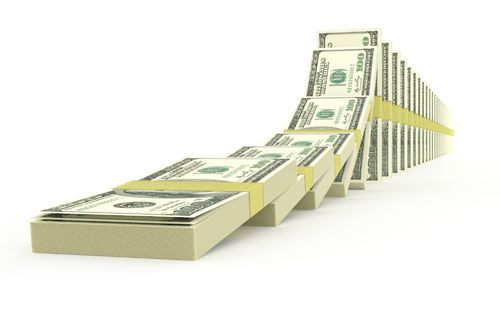Money Can Buy You Happiness, Up To A Point: Life Satisfaction Drops After $36,000 GDP Per Person

Money can buy satisfaction, or at least that’s the conclusion reached this week by economists who authored a new study. Yet rather than buy more and more joy as coffers fill, money-borne happiness drops off at $36,000 GDP (gross domestic product) per person, at which point cash becomes less gratifying.
"Our new analysis has one very surprising finding which has not been reported before — that life satisfaction appears to dip beyond a certain level of wealth,” said co-author and economist Dr. Eugenio Proto of the Centre for Competitive Advantage in the Global Economy at the University of Warwick.
The Beatles said you can’t buy love, while Kanye West said you can’t buy freedom. But economists have asked (and argued) for years over whether or not financial success equals more happiness, with popular answer since the 1970s being “no.”
In a 1973 paper simply titled “Does money buy happiness?”, economist Richard Easterlin reported that life satisfaction in the United States, as gauged by national surveys, had not changed appreciably since the 1940s, despite a 60 percent increase in average income. Dubbed the “Easterlin paradox”, this trend has been observed in poor nations across Latin America, Eastern Europe, and Africa as they developed over subsequent decades.
This concept is counter-intuitive — when was the last time you heard a millionaire complaining about being rich? — and a firm rebuttal has brewed in recent years.
Yet Dr. Proto’s new work, conducted in partnership with economist Aldo Rustichini of the University of Minnesota, splits the difference between the two sides.
By comparing GDP figures with life satisfaction data from the World Values Survey, they found nations where each citizen made below $6,700 were 12 percent less likely to report the highest level of life satisfaction relative to people who earned $18,000.
"In our study we see evidence that this is down to changes in the aspiration levels of people living in the richest countries,” continued Dr. Proto. "As countries get richer, higher levels of GDP lead to higher aspiration. There is a sense of keeping up with the Joneses as people see wealth and opportunity all around them and aspire to having more.”

Trends in financial-produced pleasure rose sharply until $20,400 GDP per capita, where they began leveling off, and ultimately peaked at $36,000. Between $20,000 and $54,000 GDP per capita improvements in life satisfaction were negligible.
As one of the wealthier countries in the world, nearly two-thirds of the households in the United States make more than the study’s inflection point of $36,000, according to the U.S. Census Bureau.
“This aspiration gap — the difference between actual income and the income we would like — eats away at life satisfaction levels,” concluded Dr. Proto. "In other words, what we aspire to becomes a moving target and one which moves away faster in the richest countries, causing the dip in happiness we see in our analysis."
Source: Proto E, Rustichini A. A Reassessment of the Relationship between GDP and Life Satisfaction. PLOS ONE. 2013.



























